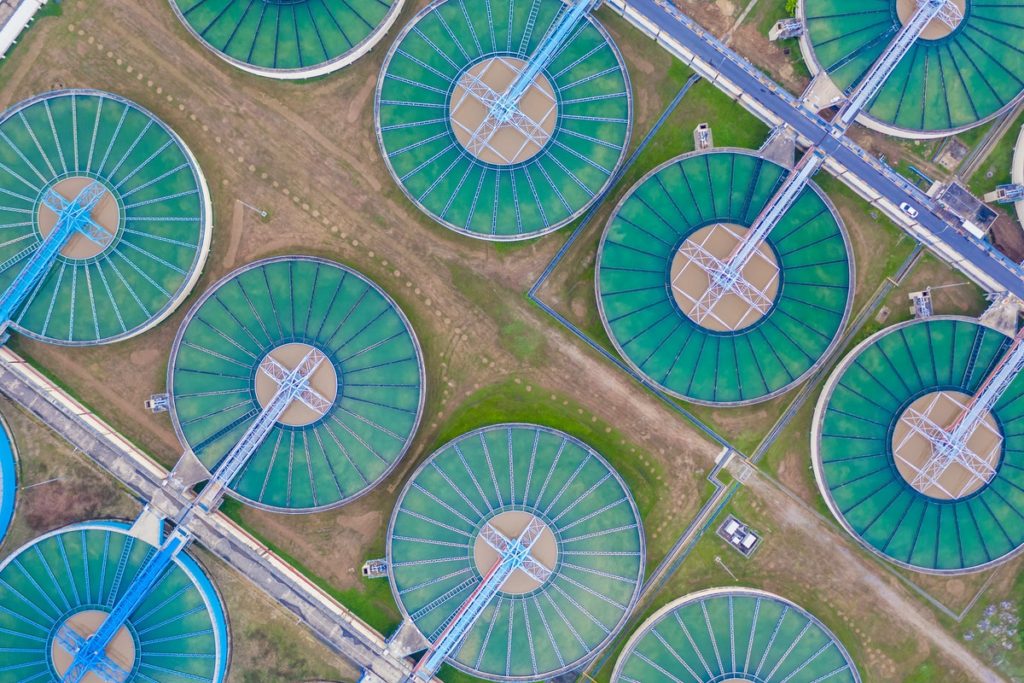Funding in the Infrastructure Investment and Jobs Act

The Infrastructure Investment and Jobs Act will provide new funding that will impact communities across America by increasing access to safe and reliable transportation; providing unprecedented funding to build smart, modern, resilient water and wastewater infrastructure; accelerating a ground-breaking energy innovation push; expanding broadband access and affordability and imposing new regulatory requirements on the broadband market; updating the environmental permitting process for major infrastructure projects and other federal authorizations; and presenting a historic opportunity for the over 8 million minority-owned businesses in the U.S. to play a key role in rebuilding America’s infrastructure.
Transportation
- Provides $351 billion for highways over five years from the Highway Trust Fund and General Fund, with $307 billion provided as formula apportionments to states.
- Provides $91 billion for transit, including $69.9 billion for transit formula programs and $21.3 billion for Capital Investment Grants and certain formula programs.
- Provides $12 billion for highway safety.
- Provides $66 billion for passenger rail and includes Amtrak, CRISI, fed-state partnership, and rail crossing elimination.
- Provides $20 billion for airports over five years, including terminal improvements, multimodal transport, and traffic-control infrastructure.
- Creates a new $27.5 billion formula-based Federal Highway bridge program. Eligible uses include highway bridge replacement, rehabilitation, preservation, protection, or construction projects on public roads.
- Creates a new $5 billion Electric Vehicles (EV) charging infrastructure formula program.
Water
Drinking Water Appropriations
- $50 million annually for the Water Infrastructure Finance and Innovation Act programs for FY2022-2026.
- $11.7 billion for the drinking water State Revolving Funds.
- $15 billion for lead service line replacement.
- $4 billion in grants for drinking water State Revolving Funds to address emerging contaminants.
- $5 billion to deal with emerging contaminants in economically distressed communities.
Wastewater Appropriations
- $11.713 billion through FY2026 for the Clean Water Act state revolving loan fund program.
- $1 billion through the Clean Water SRF program to address emerging contaminants.
Western Water
- $8.3 billion for western water infrastructure including water reuse projects.
- $3.3 billion for wildfire.
- $2.1 billion for ecosystem restoration.
Resilience Appropriations
- $1 billion for the Building Resilient Infrastructure and Communities program.
- $500 million over five years to help capitalize state resilience revolving loan funds for pre-disaster mitigation projects.

Energy
Clean Energy Demonstrations
- $21.5 billion to DOE for clean energy demonstrations and research hubs.
- $750 million for new grant program to support energy manufacturing projects in coal communities.
- $7 billion in grants/prizes for the supply chain for batteries.
- $1.5 billion for clean hydrogen manufacturing and advancing recycling RD&D.
- Expand the authority of DOE’s Loan Program Office (LPO) to invest in clean energy projects.
- $6 billion in tax credits for existing nuclear plants and $700 for existing hydropower facilities.
Existing Emissions-free Electricity
- $6 billion in tax credits to prevent premature retirement of existing zero-carbon nuclear plants.
- More than $700 million in existing hydropower facilities to improve efficiency, maintain dam safety.
Grid Modernization
- $11 billion in DOE grants to enhance resilience of electric infrastructure against disruptive events.
- $2.5 billion Transmission Facilitation Program for DOE to help develop nationally significant transmission lines.
- $3 billion in matching grants through the Smart Grid Investment Matching Grant Program.
Clean Energy Supply Chain
- Invest more than $7 billion in the supply chain for batteries. This will include producing critical minerals, sourcing materials for manufacturing, and even recycling critical materials without new extraction/mining.
- Provide an additional $1.5 billion for clean hydrogen manufacturing and advancing recycling RD&D.
- Create a new $750 million grant program to support advanced energy technology manufacturing projects in coal communities.
- Expand the authority of DOE’s Loan Program Office (LPO) to invest in projects that increase the domestic supply of critical minerals and expand LPO programs that invest in manufacturing zero-carbon technologies for medium- and heavy-duty vehicles, trains, aircraft, and marine transportation.
Orphan Wells and Abandoned Mines
- $4.7 billion to plug, remediate, and reclaim orphaned wells.
- $11.3 billion for the Abandoned Mine Land Reclamation Fund.
Energy Efficiency
- $3.5 billion in Weatherization Assistance Program
- $500 million in grants for energy efficiency and renewable energy improvements at public schools
- $5 billion EPA effort to replace diesel school buses with electric buses
- $550 million in Energy Efficiency and Conservation Block Grant Program (EECBG) and $500 million for State Energy Program grants
Broadband
New and Existing Broadband Access Programs
- $42.5 billion for Broadband Equity, Access and Deployment (BEAD) Program (Grant program providing formula funding to states for broadband deployment)
- $2 billion for the Tribal Broadband Connectivity Program (An existing program to enable broadband access in tribal communities)
- $1 billion for middle mile broadband (Infrastructure that does not connect to an end-user)
- $2.75 billion for Digital Equity Act (Grants to states and non-profit entities for digital inclusion)
- $14.2 billion for the Affordable Connectivity Program (Support for low-income individuals to affordable broadband services).
Other Policies
- Requires the FCC to initiate a rulemaking to adopt consumer broadband labels.
- Requires the FCC to conduct a rulemaking on digital discrimination.
- Directs the FCC to conduct an assessment of the future of the Universal Service Fund and broadband affordability.
- Directs the Government Accountability Office to conduct a study on the appropriate broadband speed thresholds.
- Requires the FCC to develop an online tool to track federal broadband investments.

Permitting
If adopted by states, provisions in the bill would help reduce project delays and improve project delivery, including:
- Establishing two-year limit for environmental review to drive timely decisions
- Improving coordination between agencies by designating a lead agency and single, joint environmental document
- Ensuring concise environmental analyses by limiting environmental documents to 200 pages
- Promoting use of categorical exclusions for projects without significant environmental effects
- Elevating importance of siting high voltage transmission lines
- Extending permitting council funding and their public dashboard showing project milestones
Equity Opportunities
- The Act codifies the Minority Business Development Agency (MBDA) – creating an Under Secretary position and increasing its funding and reach.
- Expands the geographic reach and scope of MBDA and creates regional MBDA offices and rural business centers.
- MBDA will play a lead role in ensuring the participation of minority-owned businesses in infrastructure projects.


